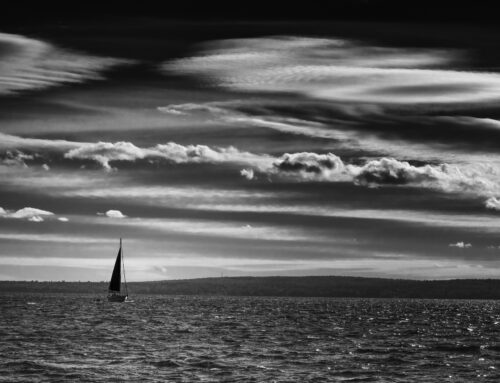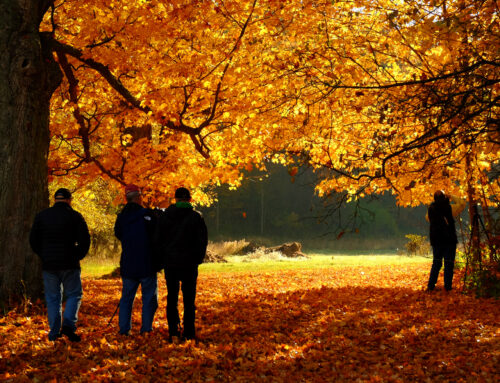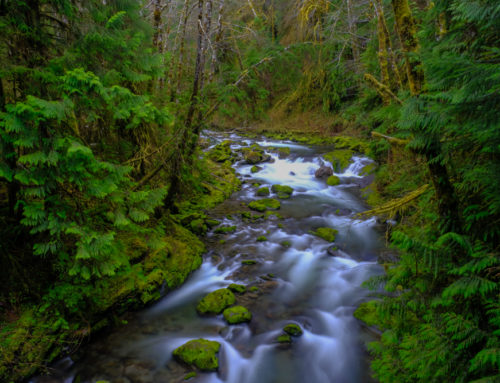Field Group and One on One Workshop Information: https://www.jackgrahamphoto.com/photo-workshops
WEBSITE: www.jackgrahamphoto.com
PODCAST: www.18percentgraymatter.com ( NOW ON iTUNES)
Contact me: jack@jackgrahamphoto.com WEEKLY SPECIALS from Hunt’s Photo & Video
http://www.wbhunt.com/specials
_______________________________________________________________________
MAKING QUALITY PANORAMA PHOTOGRAPHS
Let’s talk about Panorama photography. It’s really very easy once you get the knack of it!
TYPES of panoramic images
Single Image Pan – uses only one image as apposed to 2+ images. This involves cropping unneeded sky and foreground.
Multi Image pan: Typically uses 2-5 images, made side by side that are taken and “stitched” together to form a single image. It is recommended to overlap each image by about 25%-30%
180-360 Degree panorama – Whether you’re surrounded by a range of mountains, a forest of trees or the fence in your own backyard, stitching in 180-360(D) puts you right in the middle of it all.
Vertical Panoramas- greatfor creating a full picture of soaring skyscrapers, towering trees, and cascading waterfalls
So, what do you need to create a quality panoramic image?
If you really want a quality pan, invest in a Fuji 617 camera. The Fuji 617 is a big, heavy camera with a 5×7″ view camera lens, and used 120/220 film (yes, film!) in back. The angle of view from the 105mm f/8 lens is about the same as a 24mm lens on a DSLR and is spread across a huge 6×17 cm (2.25 x 6.5″) of film.
Current market value on these cameras is about $3200.00USD, and with that 105 lens just under $4000.00. However, the results are awesome.
You can create quality panoramic images using your DSLR and for financial reasons this probably may make the most sense. Can you use a point and shoot? Probably not as the need to keep things level and the use of a tripod is mandatory as we’ll discuss.(Unless you use something like a Canon GSeries or other quality point and shoots that can be mounted on a tripod!)
LENSES
I have made quality images using focal lengths between 24 & 200mm. I favor focal lengths over 24 mm and usually 28mm and up due to the lack of bowing effect and the resolution of the sky (which I’ll get to in a minute).
 TRIPODS,TRIPOD HEADS and ACCESSORIES
TRIPODS,TRIPOD HEADS and ACCESSORIES
Here’s is what can make or break a panoramic image. To create a quality panorama, two factors are primary. They are: leveling and eliminating parallax.
Keeping the camera level is mandatory. Parallax occurs when objects don’t line up when the images overlap. You have to try and place the optical center (not the camera) over the point of rotation.
Images using the most commonly technique, that is horizontal panoramas are, as we discussed overlapping images, typically taken from left to right, overlapping about 30%. You MUST keep the camera perfectly level at all times to make the stitching process exact and easy. I recommend a good quality ball head. I use the Really Right Stuff BH55 head. No it isn’t the least expensive you can buy, but it probably will be you’re last. www.reallyrightstuff.com
TRIPOD
Tripods and tripod use has been written and talked about forever. If you haven’t, invested in a good tripod do yourself a favor and do so. This is the least expensive component of photography you can make to improve your images Want to read a great article by Thom Hogan about buying quality equipment first.? http://bythom.com/support.htm . I am using the Gitzo3541LS. This tripod uses 6X ALR tubing and can easily support lenses up to 600mm. It’s also tall enough so my back doesn’t’t bother me from bending over all day when out in the field.
 IF YOU REALLY WANT TO DO IT RIGHT!!!!!!!!!!!!!!!!! THESE ARE THE BEST PRODUCTS ON THE MARKET!
IF YOU REALLY WANT TO DO IT RIGHT!!!!!!!!!!!!!!!!! THESE ARE THE BEST PRODUCTS ON THE MARKET!
Use the Panorama heads and accessories from NODAL NINJA www.nodalninja.com. Simply put they are the highest quality and solve a myriad of problems. I use the M1 system.
Nodal Ninja’s systems ( there are quite a few!) are specially designed panoramic tripod heads to meet specific needs of the panoramic photographer. With 4 basic series combined with a broader choice of base rotators they are able to configure pano heads that are just right for any need.
If you are looking to seamlessly stitch panoramas free of parallax while simplifying your workflow then you’ve come to the right place. Our award winning lightweight panoramic tripod heads are precision built to do just that. And being universal they will work with just about any camera and lens. We offer exceptional value without compromising quality that’s backed by industry leading support.
Why do you need a special head for top quality panorama images? Once a camera is properly mounted on a pano head the photographer is able to take multiple images, horizontally and/or vertically, without any subsequent parallax error. Parallax, simply put, is the apparent shifting of objects in the foreground to the background. There is a point inside every lens called the No Parallax Point (NPP). The proper technical term is “entrance pupil” but many refer the NPP as the nodal point, hence Nodal Ninja.
Eliminating parallax is key when needing to “seamlessly” stitch adjoining images together to form a single composite. From as little as 2 shots across the horizon, to dozens or hundreds of multi image shots, photographers are able to produce stunning mosaics and full 360 x 180 degree interactive panoramas. Nodal Ninja is a valuable tool for any photographer’s camera bag. Learn more about panoramic photography.
Another way to make Panorama images, but a bit less precise.
Use:
LEVELING BASE or PANNING CLAMP ?… make life simple! Level your camera in one easy step
 Instead of leveling the 3 tripod legs, which can be time-consuming, especially when you have only 2-3 minutes of good light, I use the GS5121LVL Gitzo Leveling Base. You simply rremove the top plate from the 3541 tripod, and replace it with this robust leveling base. Twist the handle to lock & unlock the base. Fluid motion allows smooth and fast leveling, no matter the load. At only 10.5 ounces, this is the lightest leveling available
Instead of leveling the 3 tripod legs, which can be time-consuming, especially when you have only 2-3 minutes of good light, I use the GS5121LVL Gitzo Leveling Base. You simply rremove the top plate from the 3541 tripod, and replace it with this robust leveling base. Twist the handle to lock & unlock the base. Fluid motion allows smooth and fast leveling, no matter the load. At only 10.5 ounces, this is the lightest leveling available
below is the PCL-1 mounted on the BH55
 If you don’t want to invest in the Gitzo leveling base, and you have a ball head from the Really Right Stuff folks ( or any other arca-swiss mount head), you can easily use the PCL-1 panning clamp, from the Really Right Stuff . It is truly a “system” (You can buy the BH55 along with the PCL-1 as a package and same quite a bit of money). The benefit is, just like with the Gitzo leveling base, you DO NOT need to level your tripod legs. This is a precision product with laser engraved, 2.5 degree increments, from 0 -360 degrees. There is a built in bulls eye level.
If you don’t want to invest in the Gitzo leveling base, and you have a ball head from the Really Right Stuff folks ( or any other arca-swiss mount head), you can easily use the PCL-1 panning clamp, from the Really Right Stuff . It is truly a “system” (You can buy the BH55 along with the PCL-1 as a package and same quite a bit of money). The benefit is, just like with the Gitzo leveling base, you DO NOT need to level your tripod legs. This is a precision product with laser engraved, 2.5 degree increments, from 0 -360 degrees. There is a built in bulls eye level.
Other accessories to make things even easier and extremely precise are available from the Really Right Stuff. I suggest you read their website www.reallyrightstuff.com and catalog to understand all the other products available. At the very least, to make a good quality Pan, you must have a good tripod, a quality ball head and something to make you’re leveling easy
PROPER EXPOSURE
All of this is worthless unless you follow 5 important steps when it comes to exposure:
1) Set the exposure to MANUAL. You may want to pan over the scene you are going to shoot in APERTURE PRIORITY and see what the average exposure is, but reset your exposure dial to the manual mode and then make sure your aperture & shutter speed are set to the average you have determined.
2) I also recommend resetting your white balance manually, not in the auto-white balance mode. If it’s sunny, use sunny, cloudy, use cloudy and so on.
3) Try and not shoot over F11 if possible. This aperture at F11, or even F8 should give you the amount of depth of field so that everything stays in focus in every frame.
4) Never use a filter on your camera when making panoramas…. None!
5) Never use a flash
SOFTWARE:
There is lots of panorama (stitching) software on the market and most are pretty good. PHOTO MERGE in Adobe PhotoshopCS5 and beyond and Elements 8 and newer has really improved over the years and should do everything you need.
However the top of the line stitching software available as far as I am concerned is PTgui…..which stands for Panorama Tools GraphicalUser Interface www.ptgui.com
Process (merge) you images into one file and then work on them in your post processing software. Do NOT process your images before merging them.
Check out this website. There is lots of information about panoramic photography here.
FIELD TIP: When I shoot pans, (or even for HDR images) I put my hand inform the lens and press the shutter before and after I make the sequence of shots. This way I know where the sequence begins and ends.
Have fun… Pans can be great ways to make images stand out!














JG – Actually Jack, there is a little tip contrary to your fine instructions. You MUST shoot RAW to prevent mismatched compression artifacts in the sky. Then with the RAW images, you must make sure they all have the identical white balance in the RAW converter. Otherwise the sky color will be mismatched. That is why I always render TIFF files before I start the merge. Set them all to daylight (or whatever), don’t change anything else, make the TIFFs, and then merge them. Technically, this removes every possibility for a mismatch.
BTW, for the same reasons, this also applies to HDR merges. Accurate tonal representation and consistent color in the shadows and highlights.
But then, almost no one does this. I had to figure this out for myself. Huge improvement in quality result.
Boku.